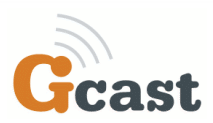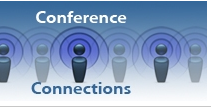
Podcasting is a great way to record what is happening or what is on your mind, but the technology is sometimes daunting for some educators. That's too bad because usually simple is best. Cell phones are in everybody's pocket in schools today. Yes, school policy usually restricts students from having cell phones at school, but they have them anyway. Wouldn't it be interesting to find an academic application for them?
I just returned from joining 15,000 of my best friends to ride our bikes across Iowa (500 miles) in a week. This was an annual experience called RAGBRAI and I rode with
Team Flamingo. This experience is something that I wanted to share with my friends and readers so I created our
Team Flamingo blog. I tried to maintain the text-based blog, but the wireless access was limited from the back of my bike. =-)
I tried posting to our blog using by texting from my Treo 800p smartphone, but Verizon decided to add 9 additional lines of advertisements to the end of each of my posts. I called up Verizon and went to their stores to find out how to stop this but it wasn't possible.
Ultimately, I decided to use my phone to post audio podcasts to my blog. It was easy to call the 888 number and leave updates about our progress. It was easy, it was quick and it was effective.
The coolest part of it was that I could embed the podcast receptor into my webpage/blog. This made it easy to access and enjoy.

I used
GCast. It only took creating an account and then putting the receptor on my webpage/blog. I called up the GCast phone number, 888-654-2278. I entered my secret code number. Then I created the podcast. When I was done, I could review the podcast to approve or deny its posting. Once I have approved the podcast, it was posted within minutes. Best of all, this is FREE. You can even upload files from your computer if you want to include a file that you custom-made instead of limiting it to the phone versions. I found that I could even subscribe to the RSS feed of my GCast podcast using iTunes.

A similar service is
Gabcast. You call a toll-free number (they provide phone numbers for multiple continents) and leave your thoughts through your phone. Gabcast has a
three levels of service. The free version doesn't allow you to upload files from your computer but you can do that for $6 or $12 per month. Paying for the service will provide you with more storage space services as well. One capability that I found in Gabcast that didn't seem to be in Gcast is that you can link to individual recordings. They suggested that you could use this to verbally explain things like eBay postings or interesting webpages.
Westley Fryer wrote an informative article about these sorts of tools entitled
Mobile Digital Storytelling for The TechEdge: The Journal of the Texas Computer Education Association. This is an informative article with lots of links if you want to learn more about it.
I don't know that this storytelling is the only way that students will benefit from this mobile digital recording system, but it provides an exciting way to chronical throughts, ideas and experiences.
Have you used these tools? If so, share what you have done.
Z
 I was just reading Scott McLeod's blog, Dangerously Irrelevant. He shared a video that was a compilation of kids opening their Wii Christmas presents. The unique thing about these clips is the incredibly over-stated show of emotion. Girls are crying and dancing and screaming. Boys are driving their fists into the air and shouting. They were obviously enthused!!!!
I was just reading Scott McLeod's blog, Dangerously Irrelevant. He shared a video that was a compilation of kids opening their Wii Christmas presents. The unique thing about these clips is the incredibly over-stated show of emotion. Girls are crying and dancing and screaming. Boys are driving their fists into the air and shouting. They were obviously enthused!!!!































I don't fully agree with their analyses of the weeping wailers as they screamed, cried and drove their fists into the air in celebration of receiving the Wii video game system. While this video definitely portrays a commercial product that the kids saw on TV commercials that were designed to place the Wii on a holy pedestal to be revered by our digital natives, these reactions are not just a matter of rampant commercialism.
I think that they signify fulfillment of their wishes to have personal access to an environment where their efforts are positively reinforced in an incremental manner that guides them to success. The games were developed to motivate and reward - and they succeed. Image via Wikipedia
Image via Wikipedia
I must admit that I have a Wii and I have been using the Wii Fit system for about 10 days. I am TOTALLY HOOKED! I awaken in the morning thinking about weather I will jog or dance or meditate on my Wii. As the system boots up and I identify myself, my cybercoach congratulates me on returning for another hour of physical challenges and accomplishments. . . . and yes, daily I do most of the exercises shown in the Nintendo Wii Fit kick-off video. (Here is an example of the Wii fit exercise session with a cybercoach.)
Besides the the arcade accolades that I receive as I head soccer balls, navigate bubbles down rivers, walk tightropes and spin hula hoops, I have experienced physical developments that benefit my posture and overall well being. I have a great time using my Wii and it makes me feel successful.
The part of our culture that we should question is not commercialism. We should ask why don't all of our students feel this way on their first day of school? How many of them punched the air with excitement as they left their homes to return to school this week? Some of them did and we should identify what their teachers are doing to provide them with the sense of success that invites them back for more.
We should take a lesson in motivation and engagement from Wii and integrate it into our classrooms.
Z